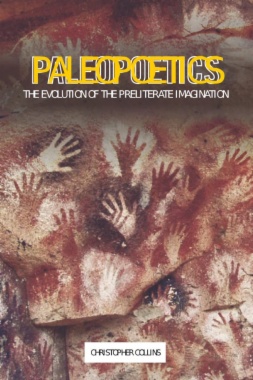Christopher Collins introduces an exciting new field of research traversing evolutionary biology, anthropology, archaeology, cognitive psychology, linguistics, neuroscience, and literary study. Paleopoetics maps the selective processes that originally shaped the human genus millions of years ago and prepared the human brain to play, imagine, empathize, and engage in fictive thought as mediated by language. A manifestation of the "cognitive turn" in the humanities, Paleopoetics calls for a broader, more integrated interpretation of the reading experience, one that restores our connection to the ancient methods of thought production still resonating within us.
Speaking with authority on the scientific aspects of cognitive poetics, Collins proposes reading literature using cognitive skills that predate language and writing. These include the brain's capacity to perceive the visible world, store its images, and retrieve them later to form simulated mental events. Long before humans could share stories through speech, they perceived, remembered, and imagined their own inner narratives. Drawing on a wide range of evidence, Collins builds an evolutionary bridge between humans' development of sensorimotor skills and their achievement of linguistic cognition, bringing current scientific perspective to such issues as the structure of narrative, the distinction between metaphor and metonymy, the relation of rhetoric to poetics, the relevance of performance theory to reading, the difference between orality and writing, and the nature of play and imagination.
- Contents
- Preface
- Some Notes on Dating and Nomenclature
- Acknowledgments
- 1. The Idea of a Paleopoetics
- Relitigating Plato v. Poiêsis
- Big History
- Rhetoric, Poetics, and Hermeneutics
- The Presymbolic Mind
- Symbolic Play and the Verbal Artifact
- 2. From Dualities to Dyads
- Duality
- Perception: The Parallel– Serial Dyad and Episodic Consciousness
- Action and the Anatomy of Multitasking
- Information Processing: The Parallel and Serial Modes
- The Dyadic Pattern
- 3. Play and Instrumentality
- Donald’s Four Stages of Consciousness
- Play in the Episodic Stage
- Instrumentality in the Mimetic Stage
- Imitative Play in the Mimetic Stage
- Preludes to Language
- 4. The World as We See It
- Vision and the Visual Imagination
- Parsing the Visible Umwelt
- Spatial Frames of Reference
- How Homo Became Sapient
- Complementarity—The Limits of Human Knowledge?
- 5. Human Communication: From Pre-Language to Protolanguage
- Why Language?
- From Pre-Language to Protolanguage and Beyond
- Gesture: Index and Icon
- Hearing Voices
- Protolanguage, the Long Transition
- 6. Language: Its Prelinguistic Inheritance
- The Rhetorical Motive
- Language Play
- Verbal Visuality: The Simulation of Perception
- Verbal Visuality: The Simulation of Action
- The Rhetorical Imagination
- 7. The Poetics of the Verbal Artifact
- The Ritual and Poetic Genres
- Oral Per for mance Style
- Memory
- Enacting the Verbal Artifact
- Paralanguage, Protolanguage, and Oral Poetics
- Epilogue: The Neopoetics of Writing
- Notes
- Bibliography
- Index

